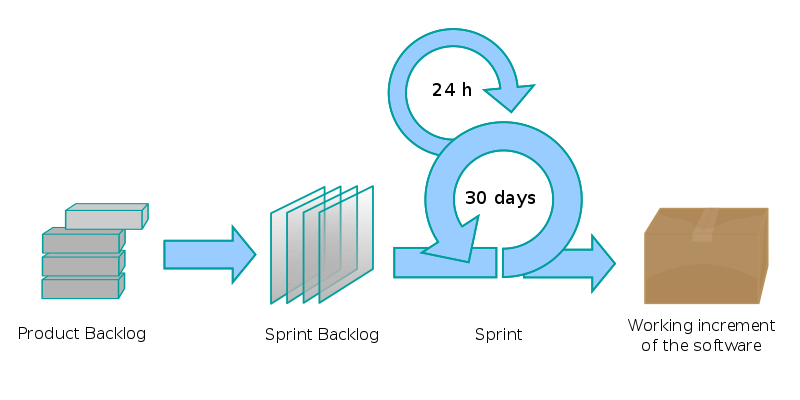 Almost exactly two years ago, incited by a comment from a reader, I wrote an article in defense of Sure Step: Read My Lips: Why?. The point was: is Sure Step a new methodology, or is it just a wheel reinvented?
Almost exactly two years ago, incited by a comment from a reader, I wrote an article in defense of Sure Step: Read My Lips: Why?. The point was: is Sure Step a new methodology, or is it just a wheel reinvented?
After having taught about a dozen of Sure Step courses all over Europe (and just preparing to take my flight to Århus, Denmark to teach the next one), I’ve decided to prepare an overview of how Sure Step aligns with other methodologies. Students often ask me about this, and often come with previous knowledge of existing methodologies. Being able to map your existing knowledge to Sure Step will be of great help to learn and understand Sure Step in the future.
So, here is a little reverse-engineering of Sure Step from methodology point of view, and an overview of how it aligns specifically with MSSP, MSF, PMBOK, Scrum and MOF.
Sure Step itself is not very explicit about its alignment with other methodologies, and it rarely explains where it takes its guidance, or concepts from. Personally I don’t understand why this is so. In my opinion, not stating where the guidance and theory come from contributes to the feeling that Sure Step is a “yet another method”, or a wheel reinvented. If Sure Step stated clearly “we based our guidance on PMBOK” or “this aligns with MSF”, it would be a helpful hint to those familiar with existing methods, and would also make it obvious that it’s not a reinvention, but improvement.
So, here we go.
MSSP
This is the only more or less publicly available methodology that Sure Step clearly says it is aligned with. This is also one of those acronyms that not even Microsoft is sure about what it means. Generally, it is considered to stand for Microsoft Solution Selling Process, even though Microsoft materials in general, as well as Sure Step, use Selling and Sales and Process for Program, thus resulting in about 4 different possible combinations. You don’t have an official page or materials explaining the methodology, but there is a link at Partner Portal which can be used by Microsoft partners to learn about this method that is used consistently by Microsoft Services. If you missed the link above, here it comes again.
Since sales in Sure Step happens in Diagnostic phase, this is also where MSSP is mostly aligned to Sure Step. Sure Step, in the description of the Diagnostic phase explains exactly how. MSSP divides the sales process into seven stages, each with a prescribed set of approaches and assigned probability of winning the opportunity.
Previous versions of Sure Step were not this clearly aligned to MSSP, and in Sure Step 2010 Microsoft had to change some guidance to make a better match. Previously, for example, Proof Of Concept was not done after Scoping Assessment, but generally before it, and was there to clarify the output of Fit Gap decision accelerator. In my practice, I would still execute it there, rather than forcing it into Proof stage of MSSP, but if you want to follow MSSP then it definitely makes sense to do it exactly as the diagram above suggests.
MSF
A more common animal in Microsoft partner network backyard is the Microsoft Solutions Framework (MSF – too bad Microsoft doesn’t have a nice landing page, so I wouldn’t have to link to Wikipedia). The alignment of Sure Step with MSF if very blurry, and there are no explicit touching points that you could point your finger at and say: “look, this is MSF!”
In its essence, MSF is split into two models: the Team Model and Governance Model, each of which have touching points and have influenced the structure and definitions of Sure Step.
The MSF Team Model roughly maps to the cross-phase processes of Sure Step in the following way:
|
MSF |
Sure Step |
|
Product Management |
Business Process Analysis Requirements and Configuration |
|
Program Management |
Program Management |
|
Architecture |
Infrastructure Integration and Interfaces |
|
Development |
Custom Coding |
|
Test |
Quality and Testing |
|
Release/Operations |
Integration and Interfaces Data Migration |
|
User Experience |
Training |
The MSF Governance Model maps to project phases in Sure Step in the following way:
|
MSF |
Sure Step |
|
Envision |
Analysis |
|
Plan |
Design |
|
Build |
Development |
|
Stabilize |
Development / Deployment |
|
Deploy |
Deployment |
PMBOK
One methodology that Sure Step seems so shy of, and gives its best not to mention it explicitly, even though certain areas of Sure Step are screaming loud otherwise, is the Project Management Body of Knowledge, by Project Management Institute. Okay, now I have committed a sacrilege, that I named PMBOK a methodology, which it actually isn’t, and as a certified PMP I am aware of this, but I’ve included it here nonetheless, because no matter if you call it a methodology, a framework, guidance or whatever, it maps so clearly to Sure Step project management library that nobody can convince me in the opposite.
The whole project management discipline part of the project management library of Sure Step maps almost directly to what PMBOK calls the knowledge areas. This is the map:
|
PMBOK |
Sure Step |
|
Integration Management |
(Program Management cross phase process) |
|
Scope Management |
Scope Management |
|
Time Management |
Time and Cost Management |
|
Cost Management |
Time and Cost Management |
|
Quality Manageemnt |
Quality Management |
|
Human Resource Management |
Resource Management |
|
Communications Management |
Communications Management |
|
Risk Management |
Risk Management / Issue Management |
|
Procurement Management |
Procurement Management |
|
Sales Management |
Even though there is no lack in touching points, there is one major and fundamental difference between Sure Step and PMBOK. Sure Step is written for, and from perspective of a solutions or service provider, while PMBOK is written from the perspective of the services buyer. This is why Sure Step has an extra discipline which is called Sales Management.
Furthermore, Sure Step doesn’t have an official Integration Management discipline, a cornerstone of project management in PMBOK, and in Sure Step this discipline roughly matches the program management cross-phase process.
One of the question I get asked by my students is if there is a map between Sure Step and PRINCE2. I am not a PRINCE2 expert, but from what I know about it, I’d say there is no direct match, and I would also say that Sure Step team didn’t consider PRINCE2 while developing Sure Step. If you have different thoughts or if you are familiar with PRINCE2, please share your thoughts here.
One thing that is funny to me is that Sure Step really goes to extreme efforts not to mention PMBOK even once in the whole guidance and documentation. Yet, if you do a search on PMBOK in Sure Step, there will be one lonely, but symptomatic occurrence: in Scoping Assessment Delivery Considerations Addendum – CRM for Government template. Why there, and why only for government? I don’t know, but I can wild-guess it: Scoping Assessment is about providing the customer an overview of the project approach, so to include a mention of PMBOK there is logical – PMBOK is a project approach. Also, since governments are most likely to go for a very formal and ceremonial way in managing the projects, it is extremely likely that PMBOK is on top of their list of preferred formal approaches, or that they even employ PMP-certified experts, those man-in-black guys are likely to like the mention of PMBOK. And the mention is (come on, go guess it!): “Microsoft Dynamics Sure Step is aligned with the Project Management Institute and the Project Management Body of Knowledge (PMBOK)” (end of quote).
Scrum
It’s Scrum. Not SCRUM. It’s not an acronym, and it’s the pig-and-chicken methodology. If Sure Step was silent about PMBOK, it is extra silent about Scrum, and even though it does mention Scrum exactly once (in the description of a role in the agile project type) Sure Step doesn’t go as far as to divide the roles into pigs and chickens, as many Scrum-sprung methodologies do.
With introduction of agile project type in Sure Step 2010, Sure Step team has made a tremendous job in providing agile guidance for a type of projects that have traditionally shunned anything that didn’t even remotely smell of waterfall. I’ve written an article on Agile Project Type for MSDynamicsWorld.com in my NAV Insights column where I’ve given a short overview of how agile maps to Sure Step, and what the Sure Step team did to include it. It’s a nice overview, and I’ll be writing about it even more.
The possible reason why Sure Step team chose Scrum as the basis for its agile approach, instead one of many others available, must be the fact that Scrum has already been taken as the agile method of choice of MSF. While MSF team was very shy of its Scrum heritage and didn’t mention Scrum explicitly in the first incarnation of MSF for Agile (going even as far as to rename the terminology), the latest releases of MSF for Agile not only mention Scrum, but even advocate it loudly.
Sure Step, regrettably, is still shy of its Scrum roots, and I hope this changes over time.
If you want to check how Scrum and Sure Step map, just compare these two diagrams:

(from Sure Step)

(from Wikipedia)
There is a huge difference between Scrum and MSF on one side and Sure Step on the other side, though. Scrum and MSF are true iterative approaches which actually ship something workable to the customer after every sprint cycle. Sure Step, however, only has internal releases, and there is still one big bang at the end of the project. Personally, I hope that this will radically change in the future releases of Sure Step, and that both partners and customers desperately need a methodology which would deliver ERP in truly agile way with true agile principles.
If you missed it, I once ranted and blogged at length about Agile and ERP.
MOF
And last, and also very least, is Microsoft Operations Framework (MOF). This one is the fuzziest of all, and it would be a long shot trying to provide a direct map between MOF and Sure Step, but Sure Step does mention alignment with MOF, and it does in fact follow certain MOF best practices.
Now I’ll offer a lame excuse why I stop here 🙂 I have a plane to catch.
And now an even lamer one: I really don’t know much about MOF 🙂
If you do know a bit about it, though, please share your thoughts here. In the meanwhile, I’ll try learning some MOF, and then fill in the blanks here.
And just to conclude – Sure Step as you can see is definitely not a wheel reinvented – it is a fantastic methodology building on top of a series of very successful and acclaimed approaches, and applying those approaches on a very narrow and specific field – the implementation projects of Microsoft Dynamics solutions. I hope you like Sure Step as much as I do, and I hope it makes your projects successful, as much as it did to mine.
And yes – if you happen to attend my Sure Step course in Århus tomorrow and on Friday, remind me – I have a gift for you!
Farvel!

